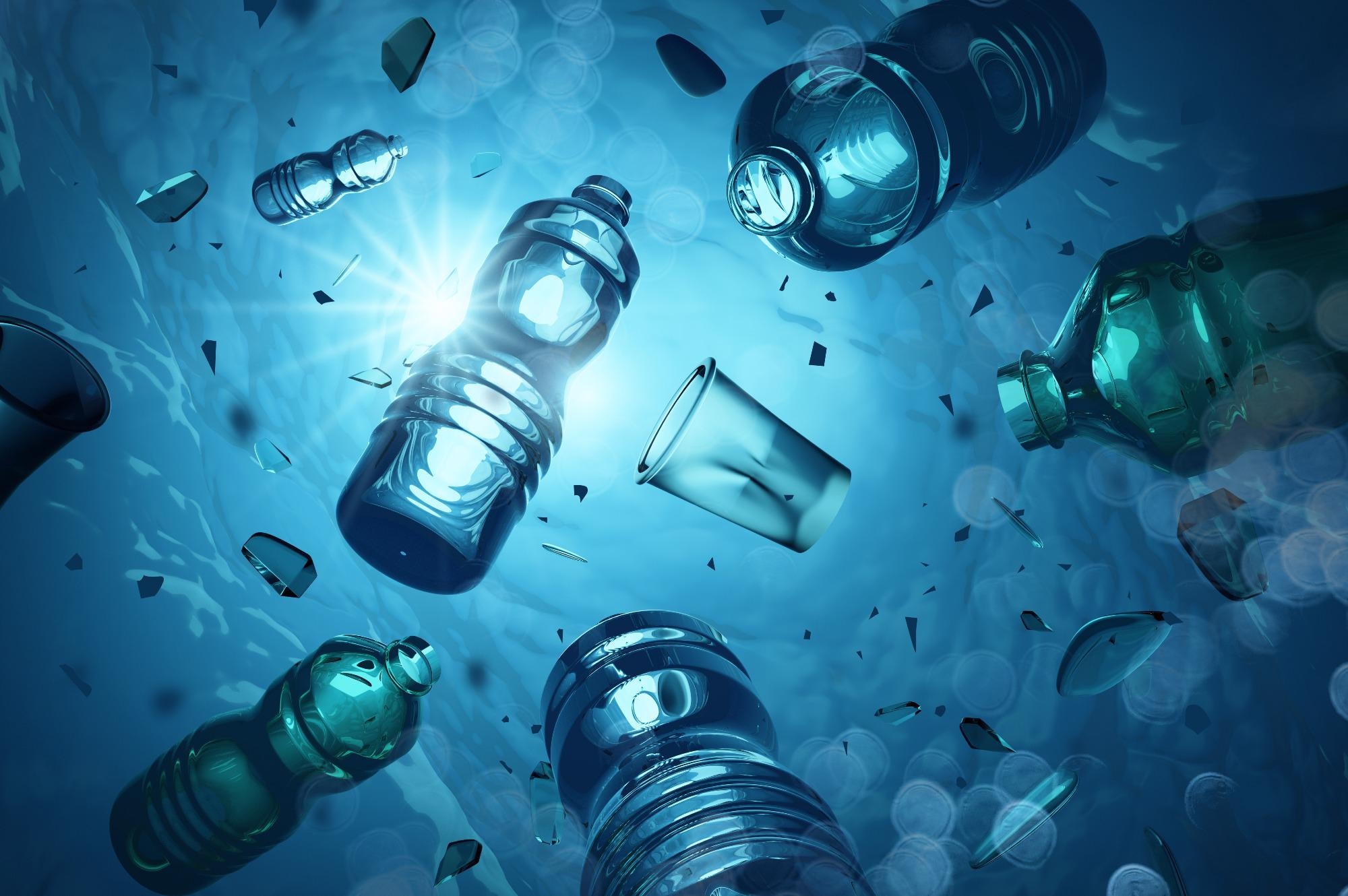Researchers from the Netherlands, Poland and Germany have recreated biodegradable polylactide (PLA) by incorporating RNA-inspired breaking points into the polymer.

Image Credit: Shutterstock.com/solarseven
RNA is a nucleic acid that converts DNA instructions into cellular functions, and it can be easily broken down by water through transesterification. Transesterification is an organic reaction that displaces alcohol from an ester through the action of another alcohol.
Plastic waste persists in seawater for centuries, but Frederik Wurm and his colleagues have introduced chemical groups to PLA so that the polymer is easily broken down by seawater.
Plastic Pollution
The UN Environment Programme (UNEP) estimates that 8.3 billion tons of plastic have been produced since the early 50s. Plastic waste has since increased. According to UNEP, if current trends persist, there will be more plastic than fish in the oceans by the year 2050.
Existing measures aim to reduce plastic usage and increase plastic reuse, thus tackling the problem at the source. However, our heavy dependence on plastics means we will never protect the oceans by only tackling the problem at the source.
Biodegradable polymers have become the subject of intense interest. They exhibit excellent thermal and mechanical properties when compared to general plastics. In theory, they're easily broken down by water and micro-organisms. They degrade into carbon dioxide and water when placed in compost.
Biodegradable polyesters such as polylactic acid (PLA) are widely used because of their tensile strength, modulus, barrier properties and transparency. But they are also produced from renewable resources such as corn and sugar cane.
A Quick Primer on Biodegradability
Biodegradation describes an organic process that converts matter into water, carbon dioxide, energy and biomass through hydrolysis, photodegradation or microbial action.
The degradation of polymers in seawater is linked to their mechanical and thermal properties, and their molecular structures. Characteristics such as hydrophobicity and glass transition temperature determine how fast they degrade.
Exposure to UV radiation, wind, seawater and bacteria lead to cracking, surface erosion, abrasion and the breakdown of PLA into mesoplastic (~5–20 mm), large microplastic (~1–5 mm), small microplastic (~20–999 μm) and nanoplastic (<1 μm) sized pieces.
Degrading PLA in Sea Water
Biodegradability is a convenient term to describe materials that degrade naturally. In reality, biodegradable plastics need to be processed in a composting facility - in temperatures ranging between 50 and 60°C - in a concentrated microbial environment. These are not conditions occurring naturally, much less at sea.
In seawater, biodegradable plastics degrade significantly slower. Although PLA degrades really well in controlled industrial composting, it exhibits almost no degradation in seawater. This is in part due to its relatively high glass transition temperature (60℃) so it's more "glassy" in low temperature seawater and thus less permeable.
A common strategy to adjust the degradation of PLA is the random copolymerization of lactide (LA) with glycolide to poly(lactide-co-glycolide)s (PLGAs). By incorporating more hydrophilic glycolic acid units, the copolymer swells and degrades faster.
Frederik Wurm of the University of Twente in the Netherlands and his colleagues were the first to use intramolecular transesterification to develop seawater degradable PLA.
They installed a synthetic phosphate linkage into PLA in a design inspired by the intramolecular transesterification of RNA. This opens the door to degrading polymers in seawater that prevent marine plastic pollution.
References and Further Reading
Timo Rheinberger, Jonas Wolfs, Agata Paneth, Hubert Gojzewski, Piotr Paneth, and Frederik R. Wurm. (2021). RNA-Inspired and Accelerated Degradation of Polylactide in Seawater. Journal of the American Chemical Society 2021 143 (40), 16673-16681 DOI: 10.1021/jacs.1c07508
Eurekalert.org. Reducing plastic pollution by adding RNA-inspired breaking points. (2021). https://www.eurekalert.org/news-releases/932200
Min, K., Cuiffi, J.D. & Mathers, R.T. (2020). Ranking environmental degradation trends of plastic marine debris based on physical properties and molecular structure. Nature Communications 11, 727. https://doi.org/10.1038/s41467-020-14538-z
Catarci C., and Blust R. (2021). Not Only Diamonds Are Forever: Degradation of Plastic Films in a Simulated Marine Environment. https://doi.org/10.3389/fenvs.2021.662844
Kliem, S., Kreutzbruck, M. and Bonten, C. (2020).Review on the biological degradation of polymers in various environments. Materials, 13(20), p. 4586.
Unep.org. Our planet is drowning in plastic pollution—it's time for change. https://www.unep.org/
Disclaimer: The views expressed here are those of the author expressed in their private capacity and do not necessarily represent the views of AZoM.com Limited T/A AZoNetwork the owner and operator of this website. This disclaimer forms part of the Terms and conditions of use of this website.